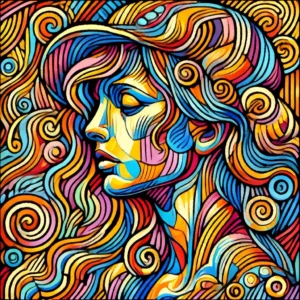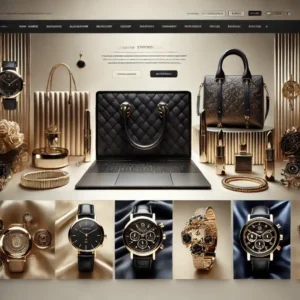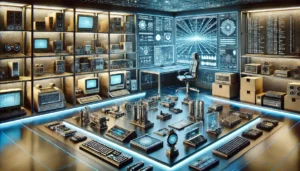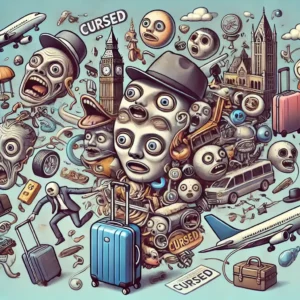Art has often been linked with traditional ideas of beauty and conventional materials. However, Khalil Chishtee challenges these notions with his unique philosophy encapsulated by the phrase “https://multigrafico.com/khalil-chishtee-no-todo-el-arte-es-belleza/” (Not All Art Is Beauty). Through his remarkable work, Chishtee urges viewers to move beyond traditional perceptions of aesthetics and engage with deeper messages in art. His journey, materials, and themes serve as a conversation starter on the evolving definition of art.
Early Life and Influences on Khalil Chishtee’s Art
Khalil Chishtee’s roots play a crucial role in shaping his artistic narrative, which is evident in “https://multigrafico.com/khalil-chishtee-no-todo-el-arte-es-belleza/.” Born in Pakistan, a country with a rich cultural history and diversity, Chishtee’s early exposure to local artisans and traditional crafts inspired his interest in exploring art. His formal education in fine arts allowed him to experiment with a variety of materials, eventually leading him to pursue art beyond traditional mediums.
Upon relocating to the United States, Chishtee found himself navigating between Eastern and Western artistic traditions, ultimately giving rise to “https://multigrafico.com/khalil-chishtee-no-todo-el-arte-es-belleza/.” This cultural duality pushed him to explore unconventional materials and themes that challenge viewers to see beyond mere aesthetics.
Challenging Traditional Notions of Beauty
Chishtee’s philosophy, “https://multigrafico.com/khalil-chishtee-no-todo-el-arte-es-belleza/,” signifies a fundamental shift in how we perceive art. His work suggests that art isn’t limited to visual appeal. Instead, it aims to provoke thought, evoke emotions, and challenge societal norms. Chishtee’s sculptures, made from discarded materials like plastic bags, stand as an invitation to explore the depths of art beyond what meets the eye.
In an interview, Chishtee expressed that “https://multigrafico.com/khalil-chishtee-no-todo-el-arte-es-belleza/” is about more than just challenging beauty; it’s about redefining what art can accomplish. This belief reflects his commitment to creating art that pushes boundaries and encourages viewers to engage with their deeper emotions.
From Waste to Art: Khalil Chishtee’s Unique Use of Plastic Bags
One of the most striking aspects of “https://multigrafico.com/khalil-chishtee-no-todo-el-arte-es-belleza/” is his use of discarded plastic bags as a primary medium. By repurposing these everyday items, he not only transforms waste into something beautiful but also sends a powerful message about sustainability and consumerism. The choice to use plastic bags wasn’t random; it was a deliberate decision to draw attention to environmental issues and challenge conventional artistic materials.
Chishtee’s sculptures, showcased under “https://multigrafico.com/khalil-chishtee-no-todo-el-arte-es-belleza/,” often feature life-sized figures or intricate forms that evoke human emotions. The contrast between the fragility of plastic and the depth of his subjects emphasizes the delicate balance between nature and humanity.
Symbolism in Khalil Chishtee’s Sculptures
Chishtee’s use of symbolism in his sculptures goes beyond the material, which is a key aspect of “https://multigrafico.com/khalil-chishtee-no-todo-el-arte-es-belleza/.” For instance, in his series titled “Floating Dreams,” life-sized figures made from plastic bags symbolize the fleeting and fragile nature of human life. These sculptures evoke a sense of transience, reflecting the impermanence of existence. By choosing unconventional materials, Chishtee compels viewers to contemplate the relationship between form and meaning in art.
Moreover, his works often juxtapose human forms with abstract elements, which aligns with the overarching theme of “https://multigrafico.com/khalil-chishtee-no-todo-el-arte-es-belleza/.” This contrast pushes viewers to question their understanding of beauty and explore the hidden narratives in his art.
Sustainability and Artistic Responsibility
Chishtee’s work isn’t just about aesthetics; it’s also about artistic responsibility as emphasized by “https://multigrafico.com/khalil-chishtee-no-todo-el-arte-es-belleza/.” By using recycled materials, he addresses critical issues like plastic pollution and waste reduction. His approach is a call to action for artists to reconsider the materials they use and the messages they convey. In this way, “https://multigrafico.com/khalil-chishtee-no-todo-el-arte-es-belleza/” goes beyond an artistic statement—it’s an advocacy for environmental awareness.
In addition to his visual commentary, Chishtee’s work urges audiences to rethink their consumption habits, which is a key message of “https://multigrafico.com/khalil-chishtee-no-todo-el-arte-es-belleza/.” His art acts as a bridge between creativity and sustainability, proving that artistic expression and environmental consciousness can coexist.
Notable Works and Their Themes
Chishtee has produced several noteworthy pieces that demonstrate his commitment to exploring unconventional themes, as highlighted in “https://multigrafico.com/khalil-chishtee-no-todo-el-arte-es-belleza/.” Some of his most notable works include:
- The Identity Series: This collection explores themes of identity and self-reflection. Using materials like mirrors, fabrics, and recycled plastics, Chishtee creates sculptures that reflect not just physical appearances but deeper notions of identity.
- Cultural Crossroads: An installation that blends cultural motifs, highlighting intersections and interactions between different cultural narratives. It urges viewers to think beyond binary cultural identities and embrace diversity.
- The Social Fabric: This series employs discarded clothing to explore migration, displacement, and social justice, reflecting the complex stories of displaced individuals.
Global Reception and Critique of His Work
Khalil Chishtee’s work, under the banner of “https://multigrafico.com/khalil-chishtee-no-todo-el-arte-es-belleza/,” has received both praise and criticism. Art enthusiasts often laud his bold rejection of traditional beauty standards and his commitment to sustainability. His innovative use of materials and his ability to evoke complex emotions have positioned him as a prominent figure in contemporary art.
However, some critics argue that his reliance on unconventional materials like plastic may sometimes overshadow the deeper themes he wishes to convey in “https://multigrafico.com/khalil-chishtee-no-todo-el-arte-es-belleza/.” Despite these critiques, Chishtee’s ability to provoke dialogue remains one of his greatest strengths, solidifying his impact on the art world.
Comparisons with Other Contemporary Artists
To appreciate Chishtee’s contribution to art, it’s valuable to compare his work with other contemporary artists. His use of recycled materials resonates with the approach of El Anatsui, who uses discarded bottle caps to create monumental sculptures, much like Chishtee’s focus on “https://multigrafico.com/khalil-chishtee-no-todo-el-arte-es-belleza/.” Similarly, Chishtee’s engagement with social and environmental themes mirrors the works of Ai Weiwei, known for addressing social issues through art.
These comparisons highlight Chishtee’s alignment with global trends in contemporary art while emphasizing his unique voice and vision within “https://multigrafico.com/khalil-chishtee-no-todo-el-arte-es-belleza/.”
Impact on Contemporary Art and Future Directions
Chishtee’s work, as seen in “https://multigrafico.com/khalil-chishtee-no-todo-el-arte-es-belleza/,” has inspired a new wave of artists to explore unconventional materials and challenge traditional norms. His focus on sustainability and social themes reflects a growing trend in contemporary art, where artists aim to provoke change rather than merely please the eye. As the art world continues to evolve, Chishtee’s influence will likely persist, encouraging future generations to embrace creativity and social responsibility.
Looking ahead, Chishtee’s journey suggests that he will continue pushing boundaries and exploring new themes. His emphasis on “https://multigrafico.com/khalil-chishtee-no-todo-el-arte-es-belleza/” serves as a reminder that art should not be limited by conventional definitions or materials.
Personal Reflections from Khalil Chishtee
In his reflections, Chishtee emphasizes that his art, as conveyed through “https://multigrafico.com/khalil-chishtee-no-todo-el-arte-es-belleza/,” is deeply personal. He believes that art should serve as a mirror, reflecting the artist’s inner struggles and the complexities of society. “Art is not just about what’s beautiful,” he states. “It’s about what’s real, what makes us think, and what drives us to change.”
These reflections offer viewers a glimpse into the mind of an artist who sees art as a vehicle for transformation—both personal and societal.
Conclusion: Finding Meaning Beyond Beauty in Art
Khalil Chishtee’s philosophy, “https://multigrafico.com/khalil-chishtee-no-todo-el-arte-es-belleza/,” challenges us to look beyond beauty and find meaning in the stories, struggles, and deeper messages conveyed through art. By embracing unconventional materials and exploring complex themes, Chishtee redefines our understanding of aesthetics, urging us to see art as a powerful tool for introspection and social change. His work serves as a reminder that true art is not limited to what is visually pleasing, but rather, it is an expression of human experiences, emotions, and a call to reflect on the world around us.

















